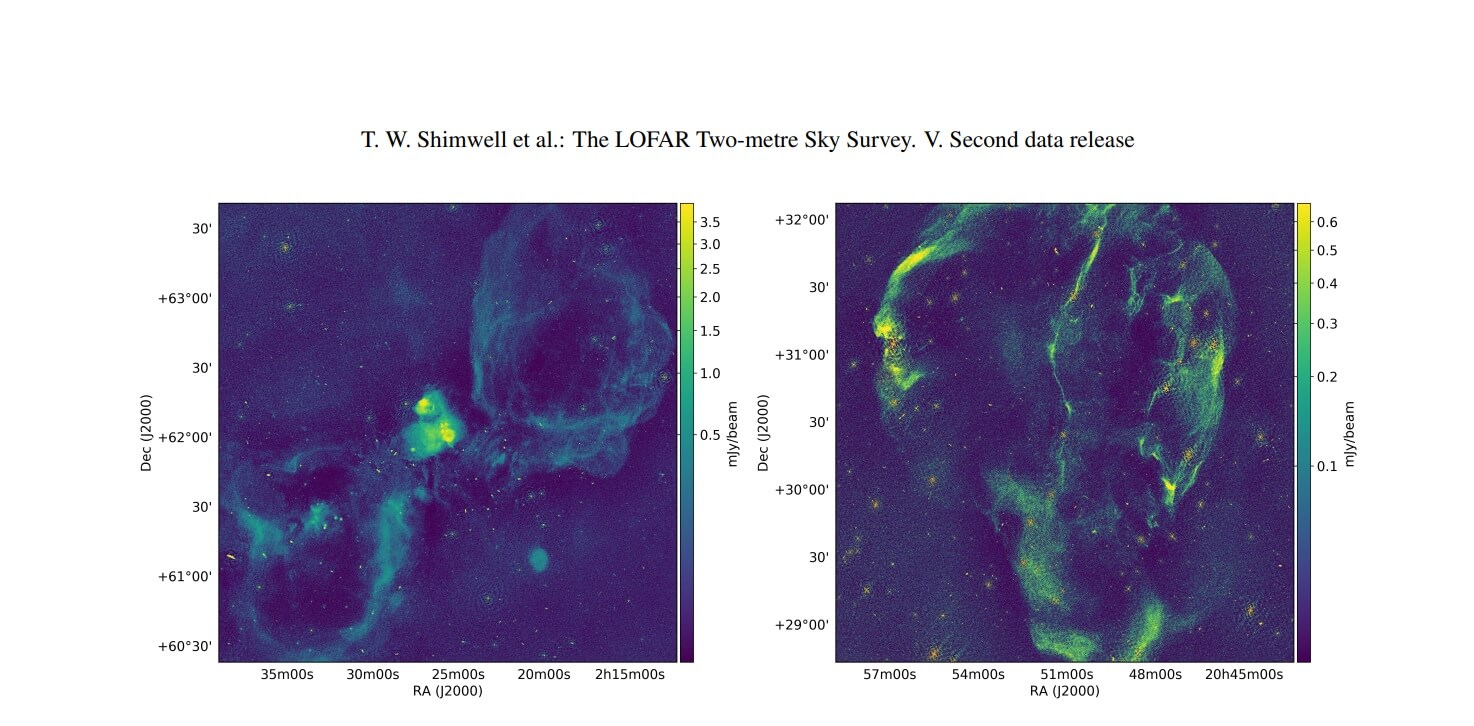"These data represent a significant step forward in astrophysics and can be used to search for a wide range of signals, from nearby planets or galaxies to faint signatures in the distant universe." the researchers write

A Durham University astronomer collaborating with a team of international scientists has mapped more than a quarter of the northern sky using the Low Frequency Array (LOFAR), a pan-European radio telescope. The map, now published for the first time, reveals an incredibly detailed radio picture of more than 4.4 million objects and presents a very dynamic picture of our universe.
The vast majority of these objects are billions of light years away. Most of these are galaxies that contain massive black holes at their center or galaxies in which many new stars are born. Rarer objects that have been discovered include colliding groups of distant galaxies as well as stars within the Milky Way.
To produce the map, scientists deployed state-of-the-art data-processing algorithms on high-performance computers across Europe to process 3,500 hours of observations that take up 8 petabytes of disk space – the equivalent of about 20,000 laptops.
This dataset, which is by far the largest ever made using the LOFAR sky survey with a 2-meter diameter telescope, shows about a million objects never seen before by any telescope and nearly four million objects at radio wavelengths.
Astronomer Timothy Shimwell from ASTRON and Leiden University, said: "It was very exciting to work on this project. Every time we create a map our screens are filled with new discoveries and objects never seen by human eyes. Exploring the unknown glowing phenomena in the energetic radio universe is such an amazing experience and our team is excited to be able to make these maps public. This release is only 27% of the entire survey and we predict it will lead to many more scientific breakthroughs in the future, including examining how the largest structures in the universe grow, how black holes form and evolve, what physics governs star formation in distant galaxies, and even detailing the most spectacular stages in the life of stars in the galaxy our."
Durham University scientist Dr Leah Morbitto said: "We have opened the door to new discoveries with this project, and future projects will follow these new discoveries in even greater detail using techniques we are working on here in Durham as part of the LOFAR-UK collaboration, to enable Data processing with 20 times better resolution.”
"These data represent a significant step forward in astrophysics and can be used to search for a wide range of signals, from nearby planets or galaxies to faint signatures in the distant universe."
More of the topic in Hayadan:

5 תגובות
This is only what has been added, so far known to hundreds of millions
4.4 million galaxies and we fight and kill for one earth. think about it…
I have no idea (despite the explanation) how these data are arrived at.
Regardless, it's unbelievable. Trying to process the numbers in my head.. and can't.
A planet made of chocolate has been discovered not far from candy galaxy f823.
I counted 4.65 million two weeks ago....